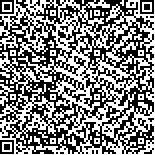| 摘要: |
| 采用DAPI荧光染色技术, 进行了2007年6月和2008年7月黄海底栖异养细菌的丰度和生物量及分布特点研究。结果表明, 2007年底栖细菌的丰度为(1.13±0.39)×109cells/cm3, 生物量为(49.63±17.26)?gC/cm3; 2008年底栖细菌的现存量较2007年低了约43%。南黄海的底栖细菌现存量较北黄海分别低8%(2007年)和13%(2008年), 而中央冷水团则较其外围区域高约10%和37%, 在南黄海呈现中央冷水区域高于近岸的分布特点, 而在北黄海则正相反。统计分析表明, 2007年北黄海底栖细菌丰度与沉积物叶绿素a含量呈极显著正相关, 南黄海细菌丰度与沉积物有机质含量及底层水盐度呈极显著正相关; 而2008年北黄海细菌丰度与环境因子未见明显的相关性, 在南黄海则与底层水的叶绿素含量呈极显著负相关, 显示浒苔暴发可能对底栖细菌产生了明显抑制。 |
| 关键词: 黄海 底栖细菌 生物量 分布 沉积环境 |
| DOI:10.11693/hyhz201304022022 |
| 分类号: |
| 基金项目:中国科学院知识创新工程重要方向项目课题, KSCX2-YW-Z-0914号; 国家重点基础研究发展计划(973), 2011CB403604号; 青岛市公共领域科技支撑计划项目, 10-3-3-38-jh号; 中国科学院海洋研究所开放航次项目资助。 |
|
| STANDING CROPS AND DISTRIBUTION OF HETEROTROPHIC BACTERIA IN THE SEDIMENTS OF THE YELLOW SEA IN SUMMERTIME |
|
MENG ZHao-Cui1, XU Kui-Dong2, LEI Yan-Li2, HE Ying-Ying1, LI Cheng-Chun1
|
|
1.Department of Marine Organism Taxonomy & Phylogeny, Institute of Oceanology, Chinese Academy of Sciences;2.Institute of Oceanology, Chinese Academy of Sciences
|
| Abstract: |
| Using DAPI epifluorescence microscopy, we investigated the abundance and biomass as well as the distribution of benthic heterotrophic bacteria based on the sediments samples collected in June 2007 and July 2008 in the Yellow Sea. The abundance of benthic bacteria in 2007 was (1.13±0.39)×108 cells/cm3 and the biomass was (49.63±17.26)?gC/cm3, while in 2008 the bacterial standing crops were about 43% lower than those in 2007. In the southern Yellow Sea the benthic bacterial standing crops were respectively 8% (in 2007) and 13% (in 2008) lower than those in the northern Yellow Sea, and were respectively 10% and 37% higher in the Yellow Sea Cold Water Mass (YSCWM) than those in the area outside the YSCWM. Moreover, the benthic bacterial standing crops were distinctly higher in the coastal region than in the YSCWM in the northern Yellow Sea, while in the southern Yellow Sea the pattern was exactly opposite. Statistical analyses showed that the benthic bacterial abundance had a significantly positive correlation with the contents of sediment chlorophyll a in the northern Yellow Sea in 2007, while that in the southern Yellow Sea had a significantly positive correlation with bottom water salinity and sediment organic matter contents. In 2008, no relationship was observed in the northern Yellow Sea, while in the southern Yellow Sea there was a significantly negative correlation between the abundance and bottom water chlorophyll concentrations, indicating inhibition of bacterial growth caused by the green algal bloom of Ulva prolifera. |
| Key words: Yellow Sea benthic bacteria biomass distribution benthic environment |
